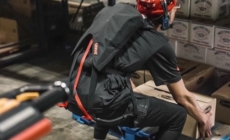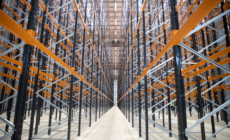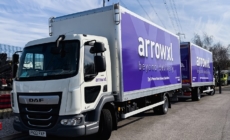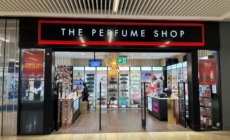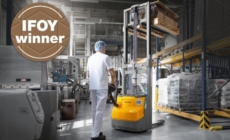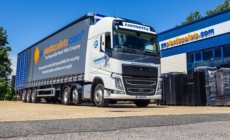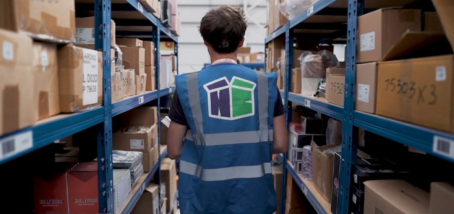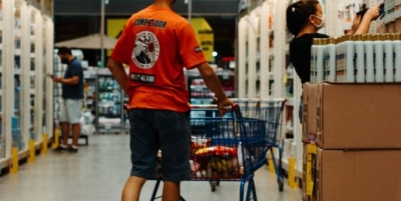-
ROSSLARE EUROPORT TARGETS HEALTH & SAFETY WITH CAMERA TELEMATICS PARTNERSHIP - 2 days ago
-
Landmark Study Reveals Wearable Robotics Significantly Boost Safety and Efficiency in Industrial Environments - July 24, 2024
-
Visku Tackle The Retail Seasonality Challenge One Pallet At A Time - July 22, 2024
-
KAMMAC AND BERGEN LOGISTICS STRENGTHEN FASHION & LIFESTYLE SERVICES IN THE UK - July 19, 2024
-
TENTBOX EXTENDS PARTNERSHIP WITH ARROWXL TO SUPPORT INCREASING DEMAND - July 17, 2024
-
The Perfume Shop improves customer journeys while driving profitability in partnership with Scurri - July 17, 2024
-
ZEROMISSION SECURES £2.3M ($3M) INVESTMENT TO ACCELERATE ELECTRIC FLEETS - July 16, 2024
-
BCMPA CELEBRATES SUCCESS OF 2024 CONFERENCE - July 15, 2024
-
Best of the Best: Jungheinrich Celebrates Triple International Award Win - July 12, 2024
-
GOPLASTICPALLETS.COM CALLS ON NEW CHANCELLOR RACHEL REEVES TO CONSIDER PLASTIC PACKAGING TAX REFORM - July 10, 2024
By Martin Bysh, CEO of Huboo
It’s easy to get caught up in the hyperbole regarding the meteoric rise of eCommerce. But for thousands of independent online retailers, the last 12 months have been a rollercoaster, not a procession.
Retailers have endured a constant battle to maintain service provision, mitigate supply risks, manage inventory levels and stave off the threat of new market entrants, not to mention protecting their staff through a health crisis.
For these retailers, future success is anything but guaranteed, and their situation is being made all the more difficult by the ‘Amazon effect’ – the notion that all eCommerce must now meet the dizzying standards of fulfilment convenience enabled by this retail behemoth.
Just last month Shopify became the latest marketplace to publish research citing customers’ seemingly implacable desire for improved delivery options. If you’re an online retailer, you could be forgiven for thinking that achieving eCommerce profitability under these conditions looks like a pretty thankless task.
So let’s take a step back for a second and try to unpack what customers actually want, versus what they’d be happy to see if it were possible. After all, in a perfect world, who wouldn’t enjoy free, instanteous, environmentally sustainable fulfilment to any location?
Free and fast?
In truth there’s plenty of evidence to suggest that free delivery matters more and more, but comparatively little to support claims that rapid delivery is now a pre-requisite of success.
‘Free’ matters because online shoppers don’t like encountering surprises at the checkout stage. Because in the world of eCommerce it only takes a few clicks for a customer to move to another marketplace. Because offering free delivery now has an algorithmic impact, making your products more visible in marketplace searches.
‘Fast’ matters if a customer is buying something urgent. For example, a replacement router or piece of computer kit might fall into this category. But when you think about it, surprisingly few products meet this criteria. Either we can wait 24-48 hours for them to arrive, or else we need them instantly and hence are more likely to go out to our nearest high street.
Our own research shows that just 14% of people expect products to show up within 48 hours, while the majority of online shoppers are perfectly content with delivery times of 2-3 days, so long as they don’t have to pay the costs of delivery. Speed is simply not seen as a unique selling point, especially if consumers are footing the bill. And for all of the recent retail innovations we’ve seen, same-day delivery remains extremely expensive.
Consistency and reliability matter more than speed
In contrast, a lot of items rely upon consistency of delivery. Our monthly subscription for toilet paper or cat food isn’t urgent, up until the point at which the delivery fails to arrive when expected.
Every online retailer needs to consider the question of ‘guaranteed or expected’ in relation to their product offering, particularly if they’re in the subscriptions business, where a failure to provide consistency will almost certainly result in a lost customer.
Visibility also matters more and more to customers – the ability to track an item throughout the fulfilment process, giving them the reassurance that it is coming, and ensuring they’re at home when it arrives.
A more strategic approach to delivery
Online retail margins are smaller than people think, particularly once marketplace or customer acquisition costs are accounted for. And right now there’s a danger that the ‘Amazon effect’ is giving retailers a false impression of what their customers really value around last mile delivery.
So before you rush into offering free and fast delivery that you can’t necessarily afford, take a moment to first think carefully about your product set and audience needs, and you’ll be a step closer to a delivery strategy that works for everyone.



